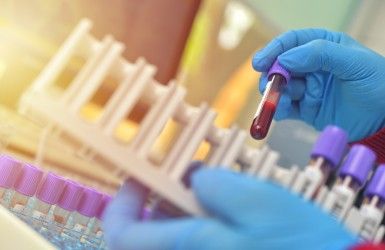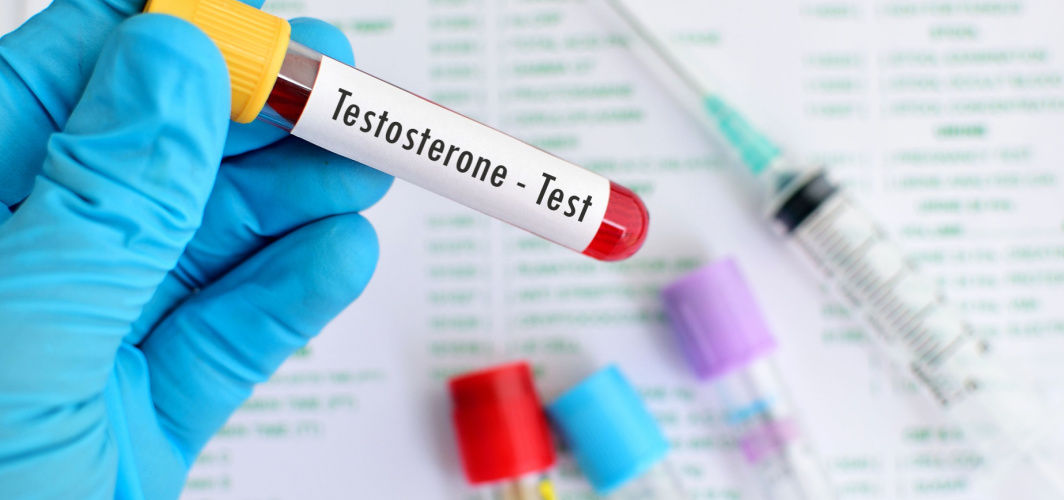General Health
Feeling Tired or Looking Pale? Know Why Your Doctor Might Recommend an RDW Blood Test
6 min read
By Apollo 24|7, Published on - 26 May 2025
Share this article
0
0 like

Unexplained fatigue and a pale appearance are common symptoms that can be caused by various health conditions, some of which may affect the blood. To investigate these signs further, your healthcare provider may recommend a blood test that includes a parameter called RDW, or red cell distribution width. This test provides useful information about the size and variation of your red blood cells and can support the diagnosis of several underlying conditions, particularly different types of anaemia.
This article explains what the RDW test measures, why it is ordered, and how it fits into the broader context of blood-based diagnostics.
Recognising the Signs: Fatigue, Paleness, and What They May Indicate
Persistent fatigue and a pale complexion are common complaints, but they shouldn’t be overlooked, especially if they worsen over time. These symptoms may signal underlying health conditions affecting red blood cell function, including:
- Anaemia (low red blood cell count or haemoglobin levels).
- Nutritional deficiencies (iron, vitamin B12, or folate deficiencies).
- Chronic diseases such as kidney disease, cardiovascular disease, or inflammatory conditions.
- Thalassemia, a genetic blood disorder.
- Cancer, liver disease, or other systemic conditions.
- Long-lasting infections or significant blood loss (from trauma or medical procedures).
Since many of these conditions impact red blood cell size and function, doctors often begin their evaluation with a complete blood count (CBC)— a fundamental blood test that includes red cell distribution width (RDW).
What Is RDW in Blood Test?
RDW, or red cell distribution width, is a numerical value that reflects the degree of variation in the size of red blood cells (RBCs) in your bloodstream. It is reported as part of a CBC panel.
- A normal RDW indicates that your red blood cells are relatively uniform in size.
- An elevated RDW means there is a significant variation in cell size, a condition known as anisocytosis.
- Changes in RDW may suggest that the body is producing new red blood cells of varying sizes due to a nutritional deficiency, blood loss, or other conditions that affect red cell production or survival.
Why RDW Is Important in Evaluating Fatigue and Anaemia
RDW is particularly valuable in identifying and characterising anaemia, one of the most common causes of fatigue and pallor. While RDW alone does not diagnose a specific condition, it can help distinguish between different types of anaemia when interpreted alongside other red cell indices:
- Iron deficiency anaemia: Often shows elevated RDW and low mean corpuscular volume (MCV)
- Vitamin B12 or folate deficiency: May present with high RDW and high MCV
- Anaemia of chronic disease: RDW is often normal or only slightly elevated
By highlighting the variability in red cell size, RDW adds diagnostic value and can guide further testing and treatment decisions.
When and Why Doctors Recommend an RDW Test
An RDW test is typically ordered when a patient presents with signs or symptoms that may indicate an underlying hematologic or systemic condition, such as:
- Unexplained fatigue
- Dizziness or lightheadedness
- Shortness of breath with minimal exertion
- Noticeable pallor (especially in the skin, lips, or nail beds)
- Cold extremities
- Rapid or irregular heartbeat
Even in the absence of symptoms, RDW is often included in routine blood work to screen for subclinical conditions, particularly in individuals at risk for nutritional deficiencies or chronic disease.
How to Prepare for an RDW Blood Test
The RDW measurement is part of a standard CBC, which typically does not require any special preparation:
- Fasting is not usually necessary, unless other concurrent tests require it.
- Patients should inform their healthcare provider about any supplements or medications, including iron or vitamin B12, as these can influence red cell indices.
- Wear a short-sleeved or loose-fitting top to facilitate access to the vein in your arm.
What to Expect During an RDW Blood Test?
An RDW blood test is a quick and routine procedure that involves drawing a small sample of blood. The process usually takes just a few minutes and is performed by a trained healthcare professional. Here’s what typically happens during the test:
- Site Selection: The most common area for drawing blood is the inner part of your arm near the elbow. In some cases, a vein on the back of your hand may be used instead.
- Cleaning the Area: The healthcare provider will clean the chosen site using an antiseptic wipe to minimise the risk of infection.
- Applying a Tourniquet: An elastic band is placed around your upper arm to increase pressure and make your veins more visible and easier to access.
- Drawing the Blood: A sterile needle is gently inserted into the vein, and blood is collected into a tube attached to the needle. You might feel a brief pinch or stinging sensation during this part.
- Finishing Up: After the blood is collected, the needle is removed, and a bandage is applied to stop any minor bleeding. The sample is then sent to a lab, where automated machines analyse it, including measuring RDW.
Most people are able to resume normal activities immediately after the blood draw. While slight soreness or bruising may occur at the site, these effects are usually mild and temporary.
Understanding Your RDW Blood Test Results
RDW is reported as a percentage, reflecting the variability in red cell size:
- Normal RDW range: Approximately 12% to 15% (may vary slightly by laboratory).
- Elevated RDW: Greater than the upper limit of the reference range, indicating greater variation in cell size.
RDW results should always be evaluated in context with other CBC parameters such as MCV, haemoglobin, hematocrit, and red blood cell count to form a complete clinical picture.
Have more questions?
How Abnormal RDW Results Are Managed
If RDW is outside the normal range, your healthcare provider may recommend additional testing based on the suspected underlying cause:
Iron studies (serum ferritin, transferrin saturation)
- Vitamin B12 and folate levels
- Reticulocyte count
- Peripheral blood smear
- Evaluation for chronic diseases or occult blood loss
- Management depends on the specific diagnosis. Treatment may include:
- Nutritional supplementation (iron, B12, folate)
- Addressing underlying chronic diseases
- Managing sources of blood loss
- Referral to a haematologist for complex or unexplained findings
RDW in Context: How It Works With Other Blood Parameters
RDW is most informative when interpreted alongside other red cell indices. Here’s how these values work together:
Conclusion: Could RDW Explain Your Fatigue or Pale Appearance?
An RDW blood test is a valuable diagnostic tool that helps healthcare providers investigate symptoms such as fatigue and pallor. While it does not provide a diagnosis on its own, it offers critical information when combined with other blood parameters. If your RDW level is abnormal, your doctor will use this information to guide further testing and determine the most appropriate treatment strategy.
Timely identification and management of blood-related disorders can significantly improve energy levels, physical function, and overall quality of life.
General Health
Frequently Asked Questions
What is RDW in blood test?
What is RDW in blood test?
What does a high RDW mean?
What does a high RDW mean?
Is the RDW test part of a regular checkup?
Is the RDW test part of a regular checkup?
Does a normal RDW mean I’m healthy?
Does a normal RDW mean I’m healthy?
Can RDW help detect early disease?
Can RDW help detect early disease?
Leave Comment
Recommended for you

General Health
5 Superfoods to Improve a Child’s Eyesight
In today’s time, millions of children worldwide suffer from poor vision or some eye disorder. This can be easily prevented by maintaining optimum eye health. There are a number of foods that help in improving the overall health of your kid’s eyes. Adding these to your children’s daily diet can do wonders!

General Health
How Sleeping Habits Affect The Immunity & Tips To Maintain Sleep Hygiene
Sleep deprivation increases the release of stress hormones, which compromises the immune system. To maintain a healthy sleep cycle, aim for 7-9 hours of sleep per night, establish good sleep habits, and avoid caffeine and alcohol before bedtime.

General Health
How to Test Testosterone Levels: A Comprehensive Guide for Men's Health
Discover the best ways to test testosterone levels at home or with a healthcare professional. Learn about accuracy and implications.
Subscribe
Sign up for our free Health Library Daily Newsletter
Get doctor-approved health tips, news, and more.
Visual Stories

Plant-based Foods That Are a Great Source of Iron
Tap to continue exploring
Recommended for you

General Health
5 Superfoods to Improve a Child’s Eyesight
In today’s time, millions of children worldwide suffer from poor vision or some eye disorder. This can be easily prevented by maintaining optimum eye health. There are a number of foods that help in improving the overall health of your kid’s eyes. Adding these to your children’s daily diet can do wonders!

General Health
How Sleeping Habits Affect The Immunity & Tips To Maintain Sleep Hygiene
Sleep deprivation increases the release of stress hormones, which compromises the immune system. To maintain a healthy sleep cycle, aim for 7-9 hours of sleep per night, establish good sleep habits, and avoid caffeine and alcohol before bedtime.

General Health
How to Test Testosterone Levels: A Comprehensive Guide for Men's Health
Discover the best ways to test testosterone levels at home or with a healthcare professional. Learn about accuracy and implications.